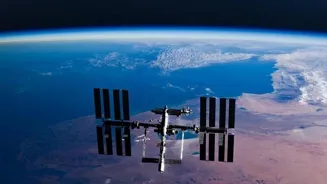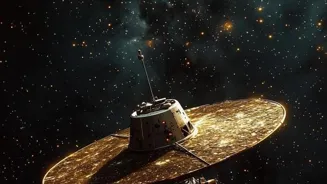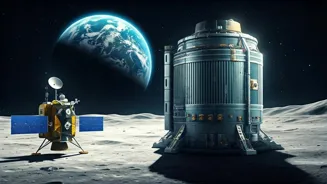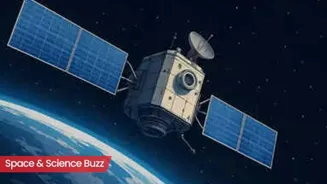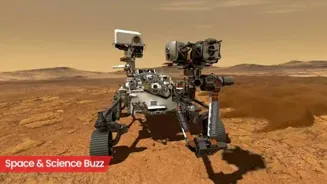Here are today’s most important updates from the realm of Science and Space.
After Setbacks, SpaceX Sets Sights on Vital Starship Launch on August 24
The tenth flight test of Starship is preparing to launch as soon as Sunday,
August 24 → https://t.co/UIwbeGoo2B pic.twitter.com/j0YKKgAxAV
— SpaceX (@SpaceX) August 15, 2025
(@SpaceX/X)
SpaceX is targeting August 24th for the highly anticipated 10th flight of its massive Starship rocket. Liftoff from Starbase, Texas, could happen as early as 7:30 PM EDT.
This isn't just another test; it's a crucial moment. Despite three flights this year, Starship's upper stage hasn't survived any missions yet. That puts serious pressure on SpaceX, as this very vehicle is slated to land astronauts on the Moon for NASA's Artemis 3 mission by 2027 - a deadline looming large.
Standing taller than most buildings at nearly 400 feet, this flight features upgraded "Block 2" hardware. It follows a recent explosion during testing that destroyed the original Ship planned for this mission.
This time, after booster separation, Starship aims to deploy test satellites, reignite its engine in space, and attempt a controlled ocean splashdown. The booster will also target a splashdown. Success here is vital, pushing Starship closer to proving it can reliably deliver on its moon mission promises.
Mars or Bust! Blue Origin Preps New Glenn's Next Big Leap
Seven BE4s at full thrust.
— Derek Newsome (@DerekdotSpace) January 16, 2025
These engines powered the first New Glenn rocket, which paved the way for Blue Origin to become just the second American company to reach orbit with their first ever attempt. pic.twitter.com/DNr1OXIFUq
(@DerekdotSpace/X)
Blue Origin is buzzing with activity at Cape Canaveral! Their colossal New Glenn rocket is gearing up for its second flight, targeting liftoff no earlier than September 29th. This crucial mission, dubbed NG-2, carries NASA's ESCAPADE - twin probes bound for Mars to study the planet's magnetic field and how solar wind strips away its atmosphere.
This flight is a major step up. While New Glenn's debut earlier this year successfully launched a test satellite (though the booster landing failed), NG-2 marks its first interplanetary mission. Blue Origin is determined to stick the landing this time, aiming to recover the massive 188-foot-tall first stage on an Atlantic drone ship.
Adding to the excitement, the launch also features a tech demo for Viasat, supporting NASA's next-gen space communications. After months of waiting, ESCAPADE's journey to the Red Planet is finally on the horizon, promising fresh Martian insights and a key test for New Glenn's ambitions.
With high-stakes science and a critical reflight of its landing tech, New Glenn's September launch is poised to be a defining moment for Blue Origin's deep space aspirations.
Webb Telescope Discovers Ancient Monster Black Hole from Cosmic Dawn!
Using JWST/NIRSpec PRISM spectroscopy, an international research team has recently made an extraordinary discovery: the earliest CONFIRMED black hole, located at the heart of the CAPERS-LRD-z9 galaxy, 13.3 billion ly away.
— Nereide (@Nereide) August 12, 2025
This means we see it as it was just 500 Myr after the… pic.twitter.com/yhpJcYVRw9
(@Nereide/X)
Stunning new images from the James Webb Space Telescope (JWST) reveal the oldest confirmed black hole ever seen - a cosmic heavyweight born when the universe was a mere 500 million years old!
This ancient beast, detected as a mysterious "little red dot" named CAPERS-LRD-z9, is shaping its entire galaxy. JWST's sharp infrared eyes saw telltale signs: stretched light waves indicating the light traveled a jaw-dropping 13.3 billion years to reach us, and hydrogen gas whirling at insane speeds - a sure sign of matter feeding a ravenous black hole.
Weighing in at a colossal 38 million times our Sun's mass, it's wrapped in a thick shroud of cold gas. This dense cloak filters out bluer light, explaining the dot's brilliant red glow and offering clues about how these early galactic monsters grew so fast. A true relic from the cosmic dawn!
NASA Funds Cosmic Delivery Vans: Private Firms to Design Space Tugs!
We submitted the final proposal for the next phase of NASA’s Lunar Terrain Vehicle Services (LTVS) contract, to build, fly, and operate the Intuitive Machines-led Moon RACER vehicle on the Moon. NASA is expected to announce the LTV delivery and demonstration award by the end of… pic.twitter.com/iOFm3ID3Yz
— Intuitive Machines (@Int_Machines) August 14, 2025
(@Int_Machines/X)
Forget struggling spacecraft! NASA just handed six private space companies, including big names like Blue Origin and Rocket Lab, a combined $1.4 million to design cosmic delivery vans, officially called orbital transfer vehicles (OTVs).
Think of OTVs as space tugs. They hitch a ride on regular rockets carrying other satellites or probes. Once in space, the OTV takes over, ferrying its cargo to specific, hard-to-reach orbits that the main rocket can't easily target and the payload couldn't reach alone. This solves a major headache: rockets guzzle fuel just getting off Earth, and spacecraft carry very little fuel for big orbital moves.
NASA's goal? To efficiently send all sorts of missions – starting with experimental ones, potentially expanding to critical missions later - to various orbits, the Moon, and even Mars. These nine initial studies are the first step towards smarter, cheaper space logistics. Results are due by mid-September.


